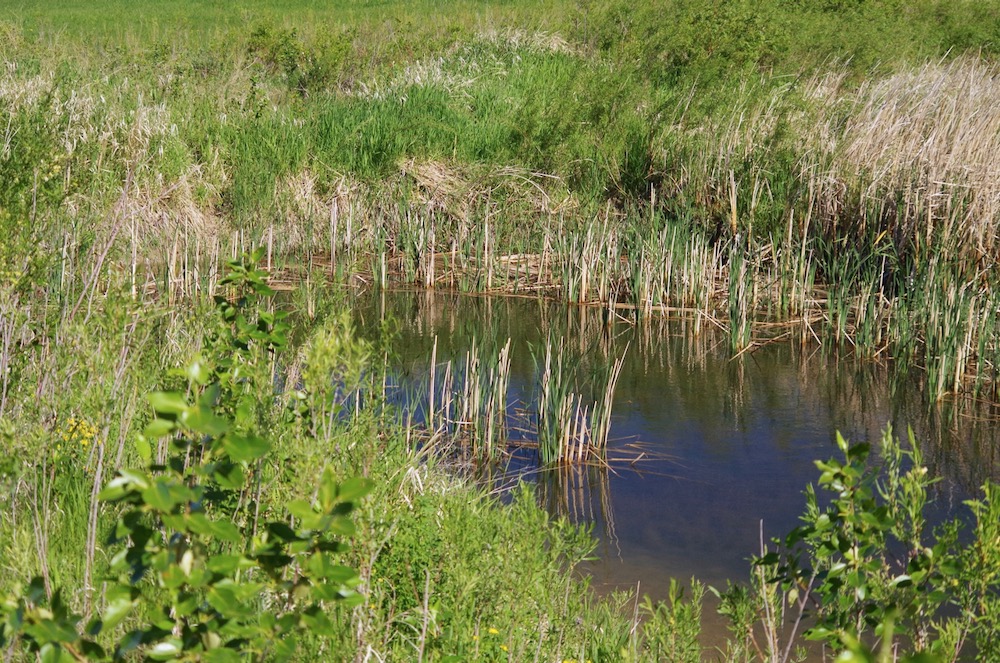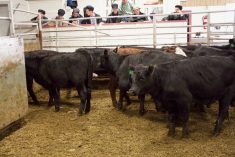DROUGHT | Many producers got desperately needed rain in the second week of June, but low water concerns have not been totally banished
Tyler Fulton’s dugout looks very different from the image of an ever-deepening hole and dwindling water that he posted to Twitter only weeks ago.
At the time, the Birtle-area farmer and president of the Manitoba Beef Producers was one of the countless livestock producers across the province with serious concerns over the year to come. His pastures had seen almost no rain so far in the season, nor had they got the usual benefit from the spring melt, since the winter had seen little snow. Even before that, the 2020 season had been dry.
By May 31, the Canadian Drought Monitor had classified much of central Manitoba and almost all of western Manitoba and the Interlake as in “extreme drought,” with some areas in the southwest devolving further into “exceptional drought,” the most extreme classification recognized by the monitor.
Now into June, only weeks into the serious grazing season, Fulton’s native pastures had never really come out of dormancy. His dugouts had already receded, forcing him to move cattle and potentially slate more heifers for sale. Without significant rain, things seemed grim.
Rains in the second week of June have helped green pastures and have led to many deep sighs of relief from livestock producers, but not everyone is out of the woods.
For at least some producers, Fulton included, Mother Nature has given a reprieve.
Weather systems brought heavy rains across the province June 8-10. A swath of the province from Snowflake to Carman reported between 50-78 millilitres of rain, with regions in central, west-central and eastern Manitoba reporting anywhere from 20-50 millimetres. Rainfalls over 20 millilitres were also reported west of Dauphin and north of Duck Mountain Provincial Park.
Likewise, Fulton said, a “really wide, decent strip” of land in western Manitoba got exactly the kind of soaking rain producers desperately needed.
“We’re already seeing pastures turn a lot greener,” he said, although he cautioned that, while rains were generally widespread, they did not hit everyone, nor are improvements consistent across even his own land.
“It kind of varies depending on the soil type and the varieties that are growing there,” he said.
His native pastures, for instance, have already lost a “good chunk” of their productive capacity, thanks to their extended dormancy.
Dugout improvements, likewise, varied.
“It depended on what the source was, what the ravine or the waterway was that the dugout was on,” he said. “If it was on a fairly major runway where there’s at least 20 feet of slope or 30 feet of slope, then there was actually some run-off.”
He estimates that one of his major dugouts recovered enough to support 10 more days to two more weeks of his animals on pasture.
“It’s patchy,” he said. “For us, it varies pretty significantly just even across 10 miles in terms of whether we’re going to have surface water issues or not.”
Fulton cited recently announced government funding targeted to producers who want to augment water sources or develop new ones (see story on page 3).
Some still short
Much of the southwest and the northern Interlake saw little moisture out of the June 8-10 rains, according to data from the province’s ag weather network, and the worry earlier this season is still very much in force.
Dr. Keri Hudson Reykdal, a veterinarian out of Ashern, is still concerned about drought and its impact on livestock water supplies.
“With dry dugouts, access to water becomes very expensive and difficult. Most dugouts in the Ashern area are already very low,” she said, adding that the area’s continuous years of drought will force farmers towards other, potentially cost-prohibitive, sources such as digging new wells.
“If we continue to have abnormal weather patterns, I fear for the cattle industry in this province,” she said.
The northern Interlake has been among the hardest-hit regions during Manitoba’s string of dry years, including the critically dry 2019 season.
The Manitoba Pork Council has also acknowledged low water risk, despite rains.
In a newsletter released June 16, the group urged producers to confirm whether their current water sources were reliable. The council further urged producers to plan ahead for alternate sources, especially in areas gripped by drought conditions, where water restrictions may come in.
If pigs have been without water for over a day, the council warned producers to consult their veterinarians, citing electrolyte imbalances (water poisoning) if water is reintroduced too quickly to very dehydrated pigs.
Quality, not just quantity
Where shortage is still top of mind, producers are also thinking about threats emerging from what little water they have.
In a release from North Dakota State University June 7, producers were warned that conditions were ripe for blue-green algae.
Stagnant water with high nutrient levels — such as might develop in a low, drought-stressed, dugout — are ideal environments, while heat also lends itself to algae growth, the release warns.
Much of Manitoba saw heat warnings in the first week of June, with parts of south-central Manitoba topping 40 C June 4.
“It is typically when we see low water levels that we start to run into issues with things like blue-green algae… that will no doubt require testing to ensure that producers aren’t exposing their livestock to it,” Fulton said.
Poisoning from blue-green algae can take anywhere from five minutes to a few hours to take hold and farmers will typically find an animal dead before noting the weakness, bloody diarrhea, strange behaviour or pale mucous membranes that are symptoms, according to the North Dakota release.
The toxic algae was linked to cattle losses in 2019. The incident in the northern Interlake impacted around 10 cattle.
Manitoba’s last few dry years have also led to warnings on nitrates and sulphates in water.
Producers saw a prime example of that risk in 2017, when poor water was linked to the death of 200 cattle in southwestern Saskatchewan. A later investigation found water sulphate levels over three times the fatal level and dissolved solids at 33,400 milligrams per litre.
According to Manitoba Agriculture and Resource Development, water with 3,000 to 4,999 milligrams of dissolved solids per litre is “satisfactory for most livestock,” and levels between 5,000 and 6,999 milligrams a litre are “reasonably safe for dairy and beef cattle, sheep, swine and horses” (although producers with pregnant or lactating animals shouldn’t risk the high end of that spectrum), and water over 7,000 milligrams a litre can lead to serious health problems.
Past the dramatic effect of animal death, Hudson Reykdal noted that such poor water has an insidious impact on production.
“Drought affects grass quality, which affects conception rate in cattle,” she noted, adding that cattle must be on a “rising plane of nutrition to have normal heat cycles.”
“When the grass is not growing, it is difficult to attain a rising plane of nutrition on pasture and alternate feed sources should be considered,” she said.
Open rates have been higher in the last two years, she added, and she expects to see similar concern this year. In 2019, Hudson Reykdal noted consistent open rates between 20 and 30 per cent, four to six times what she would normally expect.
















